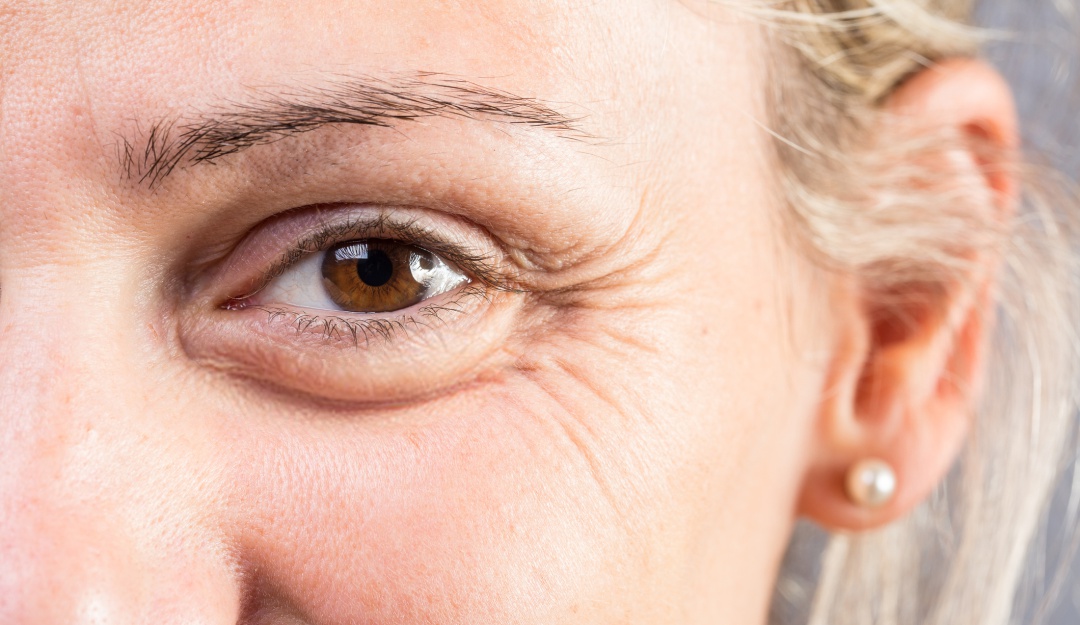interviewing “Martha Debayer in W”, Velasco Polo, MSurgeon from the National Autonomous University of Mexico, studied internal medicine for two years at the National Medical Center La Raza and dermatology at the Gea González Hospital; dedicated to private dermatology clinic De Velasco, (Tel: 5661 1645 and 55 2687 7163 // IG: @dermadevelasco // dermatologiadevelasco.com)
● Agree with the magazine’s point of view The Journal of Cosmetic Dermatology states that 60% of women worry about dark circles and ongoing fatigue.
● Based on Institute of Laser Medicine (IML) From the age of 35, crow’s feet become noticeable and are the result of a decrease in collagen (a protein necessary for skin elasticity).
● of The IML also states that crow’s feet in women aged 40 years are one of the most common cosmetic concerns seen in facial aesthetic medicine consultations.
● of Blepharoplasty or eyelid surgery According to the Spanish Society of Plastic, Aesthetic and Reconstructive Surgery (Secpre), lMen and women aged 45 and older are most in need of interventions to rejuvenate their eyes. This is one of the most popular facial cosmetic procedures in 2021 and 2022.
● According to data obtained by the International Society of Plastic Surgery (ISAPS), in 2018 some 23 million plastic surgeries. Mexico ranks third (After the United States and Brazil) 1 million 43,000 247 cosmetic surgeries, half of which are non-surgical treatments.In addition, we also carried out 872,000 367 blepharoplasty surgeries were performed on women alone.
● Today we’re going to talk about the effects of aging around the eyes, including the formation of dark circles, the appearance of eye bags, crow’s feet, and upper eyelid ptosis.
bags under eyes
– Skin loses elasticity.
– Decreased orbicularis oculi muscle tone.
– Protrusion of infraorbital fat.
All of these are also exacerbated by edema (swelling), which is sometimes exacerbated by certain bad habits (such as excess salt and alcohol).
This becomes more pronounced in patients who have also lost fat in their upper cheeks, which means less support for the eyelid-cheek transition.
What are dark circles and why do they occur?
● Two changes in the lower eyelids are commonly known as dark circles: one is the transition from the inner canthus of the eyelid to the cheek, which is called the tear trough or nasolacrimal trough, and the other is the darkening of the eyelids. The skin of the lower eyelid.
● Deepening of the naso-cervical folds is one of the first changes to occur with craniofacial aging, due to changes that occur first in the orbit (the space where the eyes are located), resulting in thinning of skin and fat. this area.
Darkening of the lower eyelid is a multifactorial phenomenon, among which:
– Heritage (Arab origin).
– Insomnia, as this alters venous blood flow and favors the deposition of hemosiderin.
– Environmental allergies (chronic conjunctivitis and rhinitis).
– Frequent friction.
– Photodamage.
What do we need to do to rejuvenate our lower eyelids?
1. Improve skin elasticity and quality: The skin of the lower eyelid is the thinnest part of the human body (1 mm), so it needs special attention if we want to delay its shrinkage due to aging as much as possible.
– First intervention: Use specific products for prevention: Every morning and evening, target the area with a special photoprotectant (TiZO Eye Renewal, Advanced Eye Protection or Skinceuticals Eye Defense), using a retinoid designed not to irritate this delicate skin alcohol (Retinol eye TR, R-Retinoate eye serum, Redermic R eye).
– Corrective treatment: For pigmentation, my favorites are Genove’s Fluidbase K and ISDIN’s KOx eyes. If puffiness is my biggest concern, I prefer Skinbetter’s Instant Eye Lift, medik8’s Eyelift Peptide or IS Clinicall’s Eye Complex. But the only thing they need is hydration: institut esthederm’s Intensive Hyaluronic Acid Serum works wonders, or SVR’s Eyelid Topical Treatment for irritated skin.
2. Non-invasive surgery
– Peeling around the eyes: is a non-invasive procedure that involves applying a mild chemical solution around the eyes to exfoliate the skin in a controlled manner, reducing the appearance of blemishes and improving texture and firmness.
– Radio frequency: EndyMed has a specific, non-invasive 5-session regimen that helps reduce eye bags and expression lines, and helps improve brow position.
– Dioxins: Carbon dioxide therapy involves injecting medical carbon dioxide (CO2) under the skin. This treatment is very effective in treating dark circles as it improves oxygenation, circulation and tightens the skin in the area. Ideally this is done 6 to 8 times, spaced 1 week apart. This is an ideal treatment for patients who want to improve lower eyelid pigmentation and who are intolerant to chemotherapy peels.
3. Minimally invasive surgery
– Mesotherapy around the eyes: It involves using small doses of substances like vitamins, hyaluronic acid and other ingredients that moisturize and tighten the skin around the eyes. Recombinase can also be used to promote lymphatic drainage and infraorbital fat shrinkage.
– Injectables or fillers: Hyaluronic acid gel allows us to improve the appearance of the transition from eyelid to cheek almost instantly. The advantage is that they can be injected through a cannula, which requires a puncture in each eyelid with minimal risk of bruising. Recovery time is minimal and lasts about a year.
– For mild cases, Teoxane’s Redensed 2 is ideal; for advanced cases, Merz’s Radiesse is ideal, consisting of calcium hydroxyapatite and is suitable for patients with lower eyelid hyperpigmentation.
– Microneedle Fractional Radio Frequency and CO2/Erbium Fractional Laser: For patients who require greater skin contraction, the best option is these techniques, which work by intensely heating the tissue to trigger repair mechanisms that dramatically increase collagen and elastin synthesis, thereby improving expression lines and sagging.

